When it comes to cornflowers, immediately remember the spacious meadows, romantic bouquets of field herbs and colors, and many paintings with cornflowers on canvas, which occupy an honorable place in Russian painting. But these flowers decorate not only spacious fields, but also cozy country sites. They are not capricious, perfectly breed and actively bloom. Therefore, Vasilek multi-year, landing and care for which is very simple, will not take you a lot of trouble and will become a beautiful addition of your flower beds.
Vasilek Multi-year, culture description
Vasilek (Centauréa) - a herbaceous plant of the family of comprehensive. The history of the origin of his name states that Vasilek was called in honor of Kentaur Hiron. According to the myth, he flawlessly owned knowledge about medicinal plants.
Motherland Vasilka is considered to consider the countries of Southern Europe. The plant prefers a lot of light and needs the easiest caring. At the same time, the cornship meets abundant bloom in response to the attention.
- Vasils Perennial or annual - beautiful plants with straight or lying stalks, which are pulled at a height from 50 to 120 cm.
- Perennial vasil leaflets are placed alternately, their form can be solid, linearly lancing or dissected around the edges.
- The inflorescences of perennial canvil are presented in the form of a spherical or cylindrical basket. Flowers in cornflower cornflower or funnelized, their color is different - dairy, snow-white, scarlet, bright yellow, purple, ultramarine, red.
- The structure of the root depends on the specific type of cornflower. The plant may have branched long roots, straight and deeply sprout in the ground root, shortened and very branched root system in the form of a curtain.
- Flowering in perennial vasilkov is long - from June to the coming of autumn.
- The natural range of growing perennial Vasilkov is the South European region. They are mostly found among the crops, and especially in rye and winter breads. In some countries, the spread of cornflowers, especially blue, so large that this culture is considered one of the most difficult weeds, which capture the sowing fields.
- Blue long-term vasilek belongs to medicinal plants. It is used as a diuretic for kidney disease.
- Vasilkov's leaves use as seasonings to improve the taste of canned vegetables, sausages, pate.
Interesting! Blue Perennial Vasilek - National Symbol of Estonia.
Famous species and varieties of many years of cornflower
In nature there are several hundred species of perennial vasilkov. They differ among themselves the structure of the root system, the form of leaves and stalks, color of the inflorescence. In horticulture, only a few dozen species and varieties of many years of cornflower are grown.
- White Vasilek - low perennial. Its branchy stalks grow not more than 30 cm in height. Snow-white colors, terry, collected in small baskets. The nature of nature is occurring less and less, so listed in the Red Book.
- Mountain Vasilek - common and popular view among gardeners. The stalks are quite high, not less than 1 m in height. The root system is perfectly formed and covers nearby territories. Flowers strong, single, their color is saturated blue, white, light-purple; Linear lanceal leaves, light green.
- Interesting variety - Vasilek Pinda. This is a dwarf plant with a height of up to 20 cm. Forms round deciduous sockets of gray-blue color. Flowers single on short stiffs, white.
- Another beautiful variety of mining cornflower is a blue angel. Perennial with compact color seed 20-30 cm in height. Flowers of medium size, lilac blue color. The variety is used for decoration of alpinaria, stony structures.
- Yellow cornflower is a view with a beautifully shaped bush, dense standing stems. Vasils are growing yellow perennial to 1 m in height, which allows you to fully appreciate their fire-yellow flowers that reach 5 cm in the diameter. The view is an excellent honey. Can be grown on the cut.
- Large-headed cornflower - tall view of a height of a bush 100-120 cm. This cornflower is actively blooming the whole summer, its flowers are large (about 8 cm in diameter), saturated yellow color. Bright representative of the species - Emir variety. High bush with straight blooms, densely deserted bright yellow semi-art colors. Ideal for group landings, mixboraders, as well as for decorating borders. Often used in a cut.
- Eastern Vasilek is a wild plant with a height of more than 110 cm. Flowers are bright yellow, small, collected in blurred inflorescences. Divided leaves, pale green.
- Meadow Vasilek is a beautiful-moving view that meets in the northern strip of Russia. Compact bush height 70-85 cm, its small flowers (no more than 4 cm in diameter) have a purple or white-pink color. Leaves from this Vasilka Lancing, they are located on two levels: in the root rosette on long stiffs, and near the basket.
- Opened cornflower - a low-spirited bush with reprehensive stalks. Popular in gardening due to the beauty of its colors: they are medium in size with bright pink color of petals. Flowers until September. The view has a beautiful variety of John Cautes. Hybrid with large colors is greater than 6 cm in diameter. It has a delicate color: Pink-purple petals, and a white gray with a yellow tank. This variety strongly attracts butterflies and bees.
- Pink cornflower is a durable bush with proudly standing stalks with a height of more than 90 cm. Vasilek multi-year pink is distinguished by the swollen inflorescences of gentle-pink color. Lancente foliage, deep green. The flowering period is short - June and July.
Vasilek multi-year, cultivation of seeds
Perennial garden cornflowers, in contrast to annual species, multiply both seed and vegetative way. Special attention should be paid to growing seedlings, since this method of reproduction is the most time consuming.
Important! Vasilkov varieties with rod root reproduce exclusively by seed.
Dates of seed seeds of many years of cornflower
Sewing Vasil's seeds spend on the flowerbed. Suitable time for this is spring when the soil warmed up enough. As a rule, this is the end of April - the first week of May. But most of the gardeners use this method of cultivation only for annual crops.
It is preferable to plant perennials under the winter after the appearance of the first signs of the freezing of the Earth. The seeds hanging at this time are distinguished by the full germination and with the arrival of spring they actively germinate.
Important! If the sowing material was not assembled on time and occurred, after the appearance of sprouts, they need to cut forward in compliance with the interval of 25-30 cm between plants.
Soil preparation for growing many years of cornflower
Vasilki grow even on very poor soils if they are enough light and heat. Therefore, before sowing seeds, special preparatory work is not carried out: the flowerbed only jump and slightly tamper, so that the sprouts are safely rooted. No other events needed, because the shoots in the spring and without it, together will be swollen together and start to grow actively.
Features Seeding Seeds Vasilka Perennial
- Seeds seeds of cornflower perennials directly to the permanent dislocation. They need to be seen at a distance of 25-30 cm, otherwise you have to cut forward so that it can form a full-fledged bush.
- Tall varieties, for example, Fisher Vasilek or large-headed need to be sung at a distance of at least 50 cm. Otherwise, the bushes will miss the nutrients, moisture and spaces for the growing season, and their shoots and leaves will be weak, flowers in small and fades.
- After pumping, alignment and humidification in the soil make small recesses in compliance with the recommended distance. Then the seeds are immersed in the wells and fall asleep their land (no more than 1 cm). Then the soil is easily tamped and covered with a flowerbed with a film material.
- If the seeds were sown in the spring, more about two weeks will appear. At this stage of cultivation, it is necessary to remove the film from the flower beds. When sowing seeds under the winter, the pig is boiling with the arrival of spring.
Advice! The collected seeds of Vasilkov retain the germination of about three years.
Vasilek multi-year, landing
Vasilek refers to perennials that are easy to care. However, those who first decided to replenish their garden to this culture, you need to know some of the features of its landing and growing:
- Vasilka prefer sunny spacious places. Only in such conditions they will bloom long, surprising the wealth of their buds.
- In group landings of cornflowers, especially dwarf varieties, always want to occupy the first plan, where they will not be deprived by sunlight and space.
- The mainestreams of perennial vasilkov can be called their frost resistance, disease resistance.
- Vasilek garden long-term grows well on areas with different soil, even if it is not too fertile or sandy. But it is better to provide these hardy alkaline soil flowers with a moderate amount of minerals. Then they will abundantly bloom all summer, and please gaze your juicy rich-green foliage to the end of autumn. The main thing is not to make fertilizers abundantly, otherwise the cornflowers will not multiply.
Planting bushes of cornflowers spend on the eve of the autumn. During this period, the division of adult bushes on Delleki:
- The maternal bush is digging along with an earthen room, so as not to damage the rhizome.
- If the soil is wet, it is gently shaken with roots. If the landing is carried out in dry weather, the root with a lump of land is immersed in a bucket with water and in such a way it is freed from the remnants of the Earth.
- For the successful rooting of the decene, the bush will be stopped, leaving no more than 10-12 cm.
- After that, the rhizome is divided into delays, while leaving for each of them a full-fledged root and three kidneys.
- Further, young bushes are planted for a new place: water poured into the dug fossa, carefully immersed the root, fall asleep with its land, it is once again watering.
On a note! Most species of many years of cornflower blooms the following year.
Perennial Vasilka, Garden Care
Perennial canvils need modest care.
- Watering should be moderate, because the cornflowers are more willing drought, rather than increased humidity. In this issue there is only one rule: if the weather is dry and without precipitation, the cornflowers are watered if it rains often, watering is not carried out at all.
- For active growth and good flowering, the cornflower needs warm weather. Favorable temperature range from +26 to +30 ⁰c. If the temperature is above 35⁰С, the bootonization will not pass so abundantly.
- It is often important to loosen the soil in a rigorous circle, remove weeds.
- Fertilizers can be made once in the period of active growth.
- If the flowers of Vasilek are many years of grown on a slice, you need to spend twice a month, using a comprehensive fertilizer for flowering crops.
- As the breeze, it is desirable to cut faded inflorescences. It will impede the irrational consumption of nutrients and moisture.
- Before the arrival of cold weather, the perennial is not necessary for the winter. It is well tolerating harsh winters and does not freeze. The only thing to do is trim the above-ground part to a height of 10-15 cm from the ground.
Diseases and pests Vasil Perennial
- The perennial practically does not ill and only occasionally can be amazed by pests and fungi. So, in dry weather, cornflows are exposed to the invasion of a pawite tick. If this happens, specks will begin to quickly appear on the leaves, and then they will yellow and fall. In this situation, it is necessary to immediately cut down all the leaves with signs of lesion, and the plant is treated with soap solution or accomplice.
- Another danger that seesing the cornflowers, - Fusariosis. The fungus is rapidly striking foliage, stems, and without treatment lead to the death of the plant. For plant processing, beomyl or foundation can be used.
Perennial Vasilek, Using Landscape Design
In the design of gardens, urban flows or parks, cornflowers are used especially often. The lowest varieties of cornflowers look beautifully in the mountaineering, mixlers, on stony structures. The average grades are often planted for the formation of borders and alleys, and beautiful city flower beds are created behind their participation.
High grades are flawlessly suitable for group or multiple single landings. Often grown on a slice to create bouquets and colorful flower compositions. The ideal partners of Vasilka are chamomiles, phlox, aconites, dolphinium.


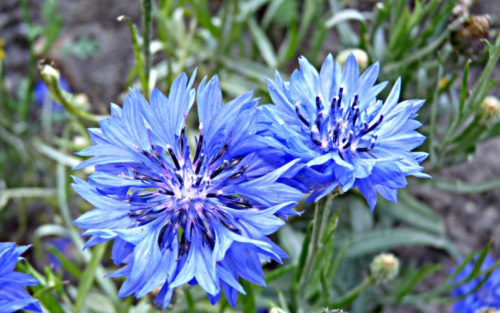

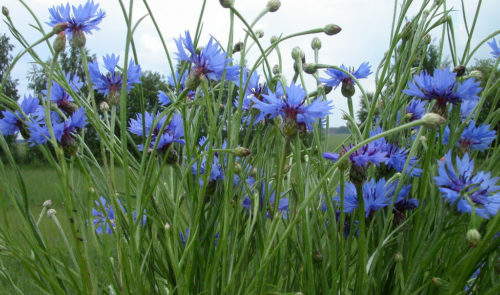
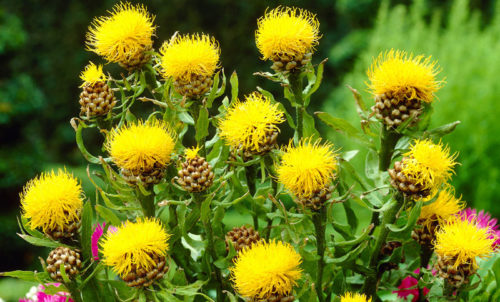
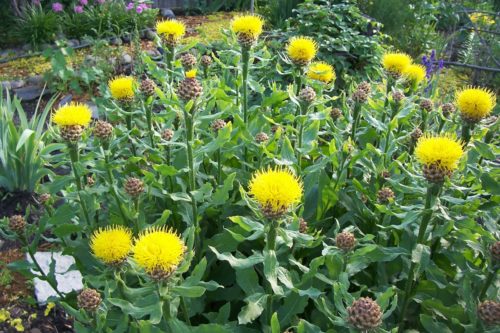
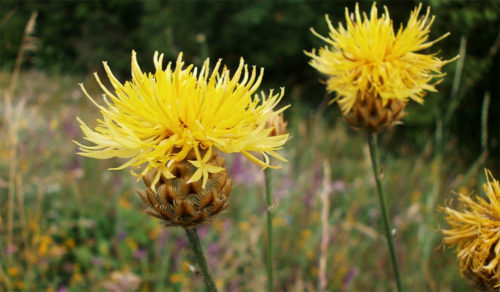
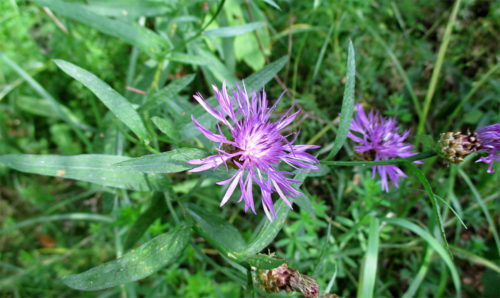
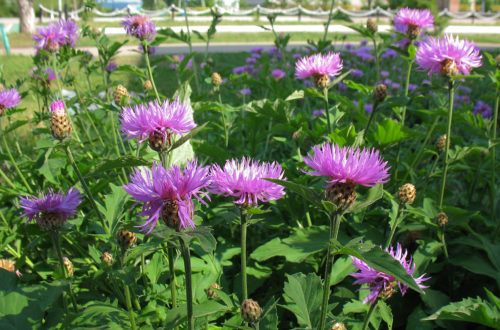
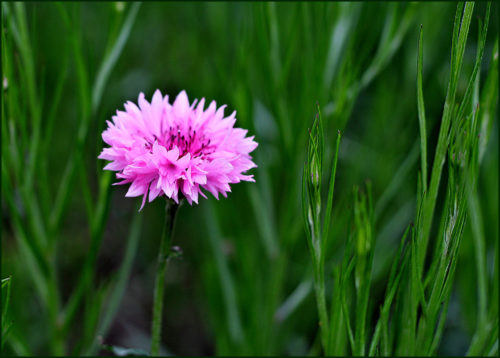


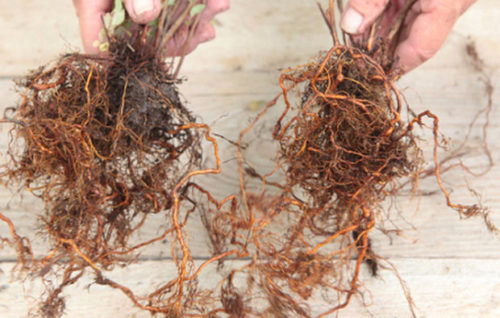
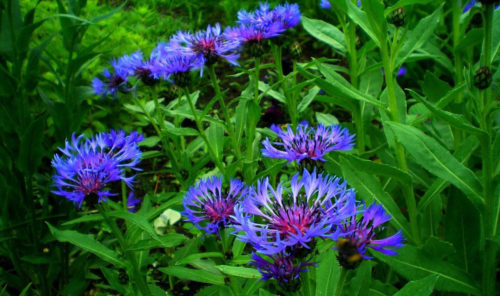
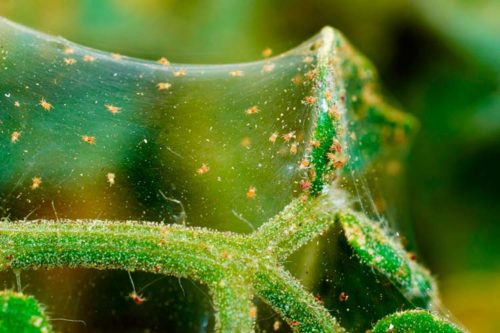
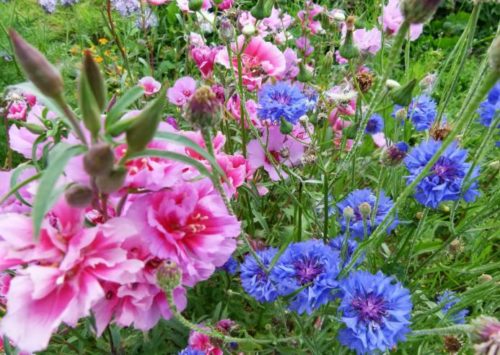

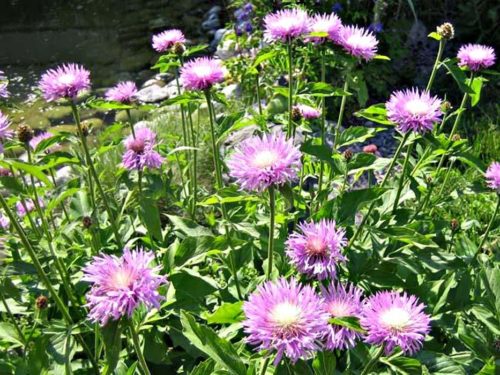
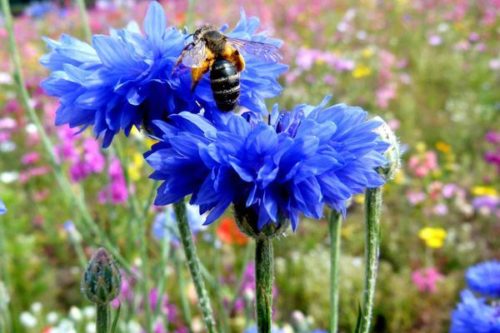
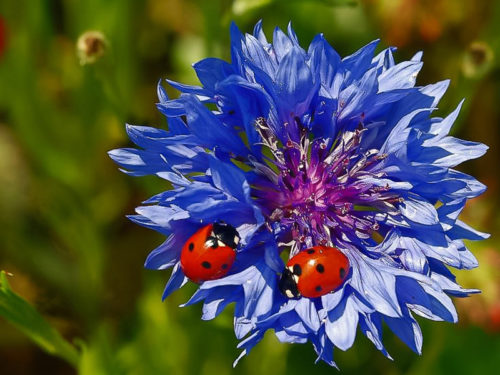
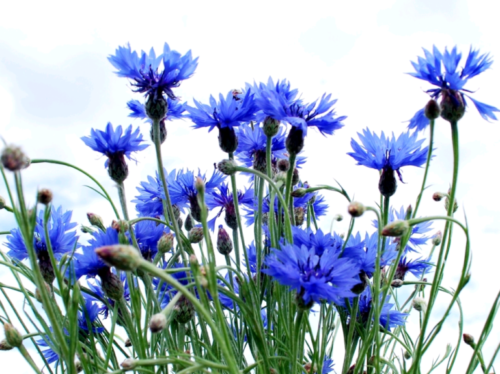
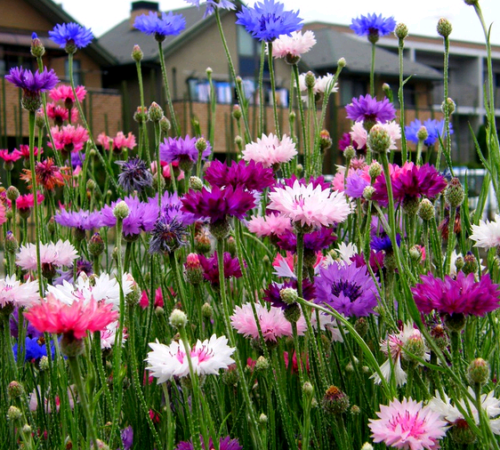












 Start a discussion ...
Start a discussion ...